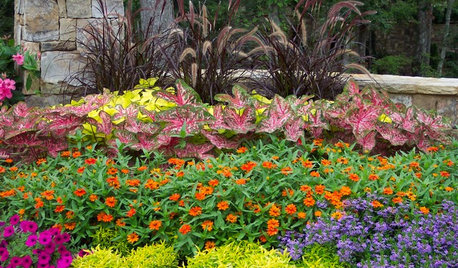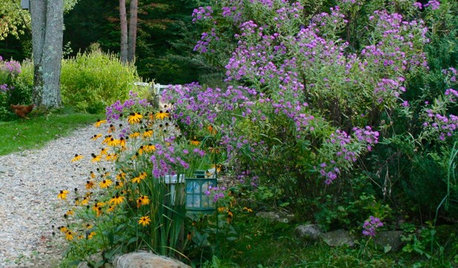I've been reading this forum intermittently for years, and finally this year got the courage to tear out some enormous healthy lilac bushes to make way for my dream of growing blueberries.
They are in a plot that is nearly 100 square feet, up against the south-facing wall of my garage.
I got a soil test and was shocked to see how very alkaline my soil is; everyone around here grows azaleas, so I'd imagined that the soil would at least be slightly to the acid side of the scale. Perhaps the proximity to the foundation of the garage is a factor; in any case my soil test (done by a lab, not a home test) was measured at pH 7.7.
I'd read that the amount of sulfur needed to lower soil pH one point is very dependent on the texture of the soil - sandy needs less per area or volume than does loam, and clay needs the most. I would call my soil "clay" but I realize these things are a continuum, and my soil really isn't as gummy as that I've heard described by others on GardenWeb. I'd imagined that a soil test would show my where my soil appeared on the soil triangle, but it doesn't (do they often tell this?). In any case the test folks recommended 6.6 pounds of sulfur to get the soil in shape for blueberries.
The soil report also said the soil is pretty desperately short on potassium, and needed 1/4 lb per 100 square feet more.
Here's what I did to my soil:
I loosened the soil to 10 or 12 inches deep, and dug in:
- a fair amount of partly-composted shredded leaves
- some homemade compost
- some alfalfa meal (slow release nitrogen, feeds the worms, helps the organic content)
- 4 pounds greensand (to supply nearly 1/4 pound of potassium)
- 5 pounds sulfur - the pelletized "elemental" sort (bag says 90% sulfur)
Then I mixed a large bale (3.8 cubic feet) of peat moss into the top 6 inches or so of soil.
I should say that with all these additions, the planting location is now mounded up, now 6 or 8 inches above the surrounding soil level. I realize it will settle some with time, but I won't walk on it, and hope it will remain just a bit elevated to help the drainage.
I waited a few weeks, planted five blueberry bushes, and mulched with partly-composted shredded leaves.
I realize the sulfur takes a while to "work" through reactions with various parts of the soil - and that I may need to be keeping a close eye on the bushes for whether they need a quicker-acting solution in the meantime. If I see leaves getting yellow, I plan to get some iron sulfate (per Don Yellman's recommendations here on GardenWeb). If that happens - how much should I use? I usually use organic amendments, in no small part because I don't have to worry too much about timing or exact amounts; how apprehensive do I need to be about overshooting - putting on too much and swinging things right past the right zone?
In general I'm curious how mobile sulfur is in the soil. I'm guessing fairly mobile, since people talk about success with scratching it in at the surface around a plant. I had the impression that some nutrients didn't travel well in soil at all, but I don't recall which.
On to my MAIN questions!
My bushes have been in the ground for a couple of weeks. I think they look fairly healthy, but I'm noticing two things that worry me. I'm seeing some pest damage - something is eating the leaves. The "something" is almost certainly an insect, the leaf damage is too high to be rabbits and too small to be anything but a bug. It looks like caterpillar damage to me - quite a bit of damage to one plant, none at all to several others, just a few leaves nibbled on one. I've searched for the culprit, but don't find any insects on the plants at all.
Second, I'm seeing some color changes in some leaves - browning at the tip, reddening at the edges. I know that browning at the tip can sometimes mean fertilizer burn, but I didn't add anything that seems likely to be responsible. It isn't the browning of a crispy dry leaf (or at least doesn't start out that way) - more a color change to a rich reddish brown.
Here is a link to a page of five photos of my plants.
Critter damage and tip browning photos
Thanks in advance for your thoughts and advice.
- LCPW















bencjedi
franktank232
Related Discussions
Questions re soil mix for Figs and Blueberries, Bay and peach
Q
shd I hard prune pest-damaged/blackspotted foliage?
Q
What pest caused this leaf damage?
Q
Converting typhoon damaged hillside forest to blueberry plantation
Q
lcpw_gwOriginal Author
kiwinut
fruitnut Z7 4500ft SW TX
bencjedi